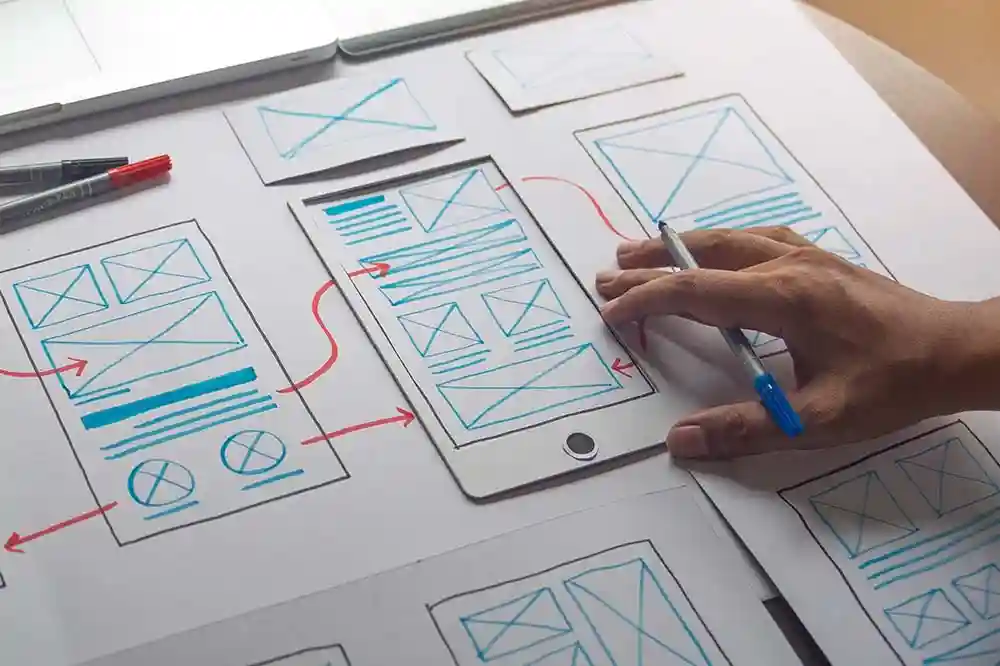In the fast-paced digital world we live in today, user experience (UX) design plays a crucial role in the success of any product or service. UX design is all about creating meaningful and relevant experiences for users by understanding their needs, behaviors, and motivations.
Whether you are a seasoned UX designer or just starting out in the field, incorporating these top UX design tips into your workflow can help you create exceptional user experiences that keep users coming back for more.
Understand Your Users
One of the fundamental principles of UX design is understanding your users. Take the time to research and analyze your target audience to gain insights into their needs, preferences, and pain points. By understanding your users, you can design solutions that address their specific needs and enhance their overall experience.
Keep It Simple
When it comes to UX design, simplicity is key. Avoid cluttering your design with unnecessary elements and features. Instead, focus on creating a clean and intuitive interface that guides users through the product or service seamlessly. Remember, less is often more when it comes to UX design.
Prioritize Accessibility
Accessibility is an essential aspect of UX design that should not be overlooked. Ensure that your design is inclusive and accessible to users of all abilities. Consider factors such as color contrast, font size, and navigation options to make your product or service usable for everyone.
Use Consistent Design Patterns
Consistency is key in UX design. Use consistent design patterns, such as colors, fonts, and layout, throughout your product to create a cohesive user experience. Consistent design not only improves usability but also helps build brand recognition and trust.
Test Early and Often
User testing is a critical step in the UX design process. Conducting usability tests early and frequently allows you to gather valuable feedback from real users and identify potential issues before they become major problems. Use tools like prototypes and mockups to test different design solutions and iterate based on user feedback.
Embrace Mobile Responsiveness
With the increasing use of mobile devices, designing for mobile responsiveness is essential in UX design. Ensure that your design is optimized for different screen sizes and devices to provide a seamless experience across all platforms. Responsive design not only improves usability but also boosts SEO and user engagement.
Focus on User Feedback
User feedback is a goldmine of insights for UX designers. Encourage users to provide feedback through surveys, interviews, and usability tests to understand their experiences and pain points. Use this feedback to refine your design and address any issues that users may encounter.
Collaborate with Stakeholders
UX design is a collaborative process that involves various stakeholders, including developers, product managers, and marketers. Collaborate with cross-functional teams to align on project goals, share insights, and ensure that the final product meets the needs of both users and the business.
Stay Updated on UX Trends
The field of UX design is constantly evolving, with new trends and technologies emerging regularly. Stay updated on the latest UX trends, such as voice interfaces, augmented reality, and chatbots, to incorporate innovative solutions into your designs and stay ahead of the competition.
Never Stop Learning
Finally, the key to success in UX design is continuous learning and improvement. Attend workshops, conferences, and online courses to expand your knowledge and skills in UX design. Platforms like Yellowbrick offer comprehensive UX design courses that cover essential topics such as user research, prototyping, and usability testing.
Conclusion
By incorporating these top UX design tips into your practice, you can create exceptional user experiences that delight users and drive business success. Remember, UX design is not just about creating visually appealing designs but about understanding user needs and creating solutions that make their lives easier.
Start implementing these tips today and watch your UX designs transform into memorable and impactful experiences for users.
Key Takeaways:
- Understanding your users is essential for creating meaningful UX designs.
- Keep your designs simple and intuitive to enhance user experience.
- Prioritize accessibility to ensure inclusivity for all users.
- Consistent design patterns build brand recognition and trust.
- User testing and feedback help identify and address issues early on.
- Mobile responsiveness is crucial for seamless user experiences across devices.
- Collaboration with stakeholders ensures alignment with project goals.
- Stay updated on UX trends to incorporate innovative solutions.
- Continuous learning is key to success in UX design.
For further enhancing your skills in UX design, consider enrolling in the Parsons UX Design Foundations online course and certificate program offered by Yellowbrick.
This comprehensive program covers essential topics to advance your expertise and stay competitive in the ever-evolving field of UX design.




